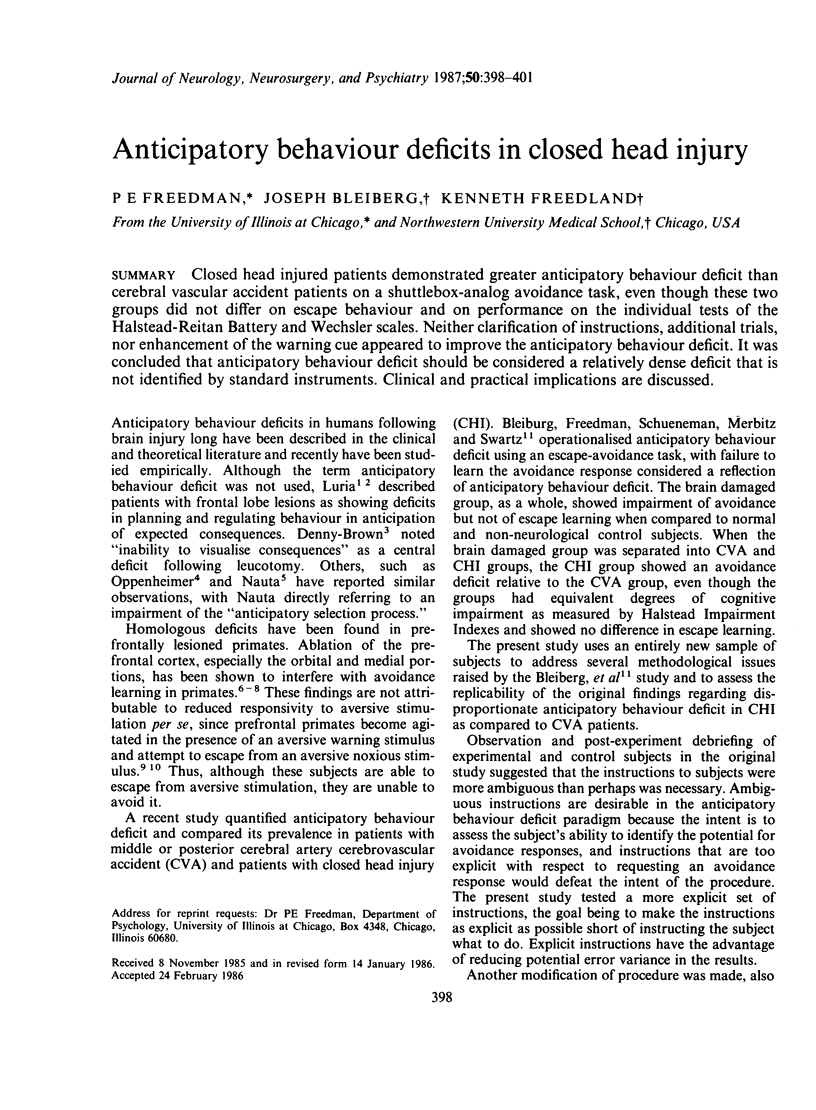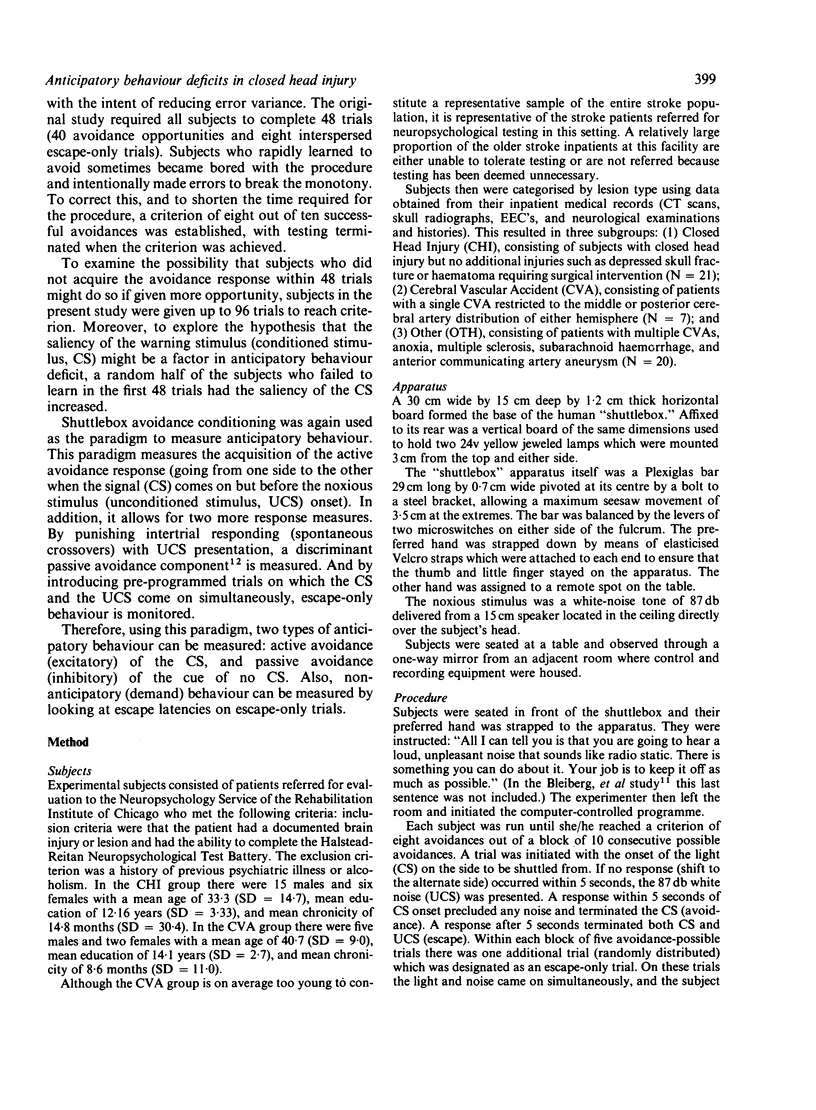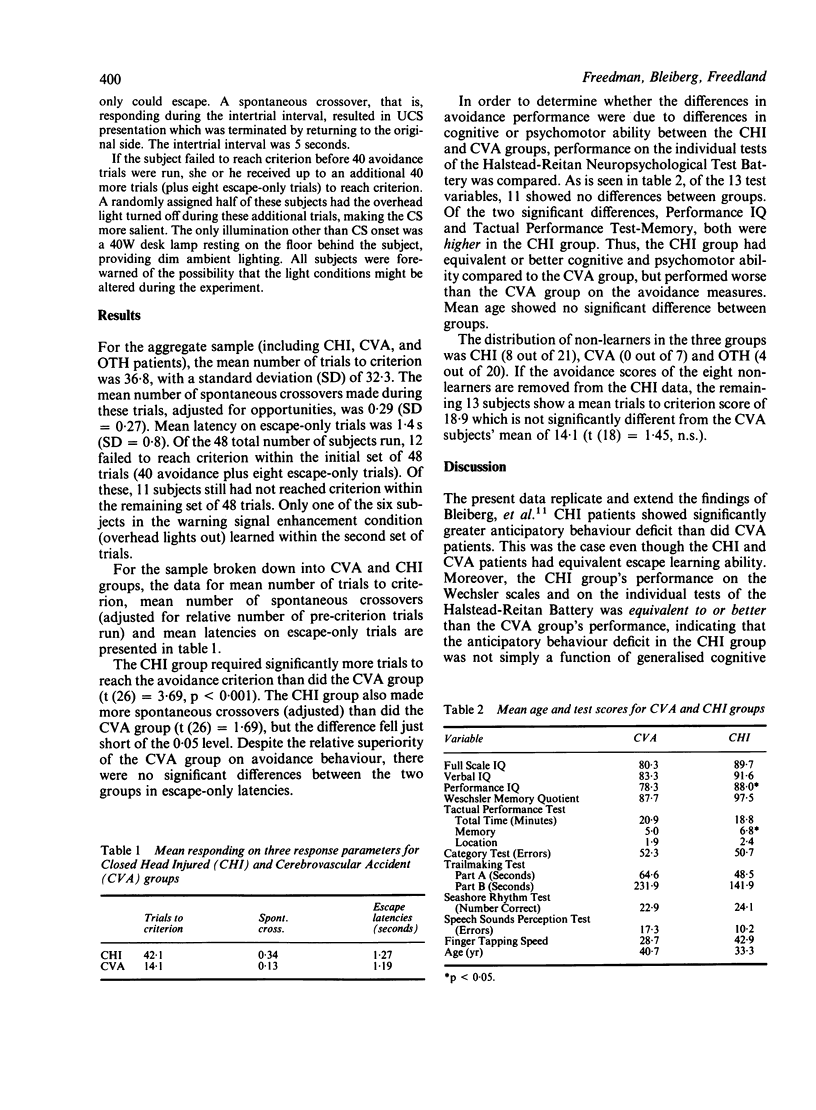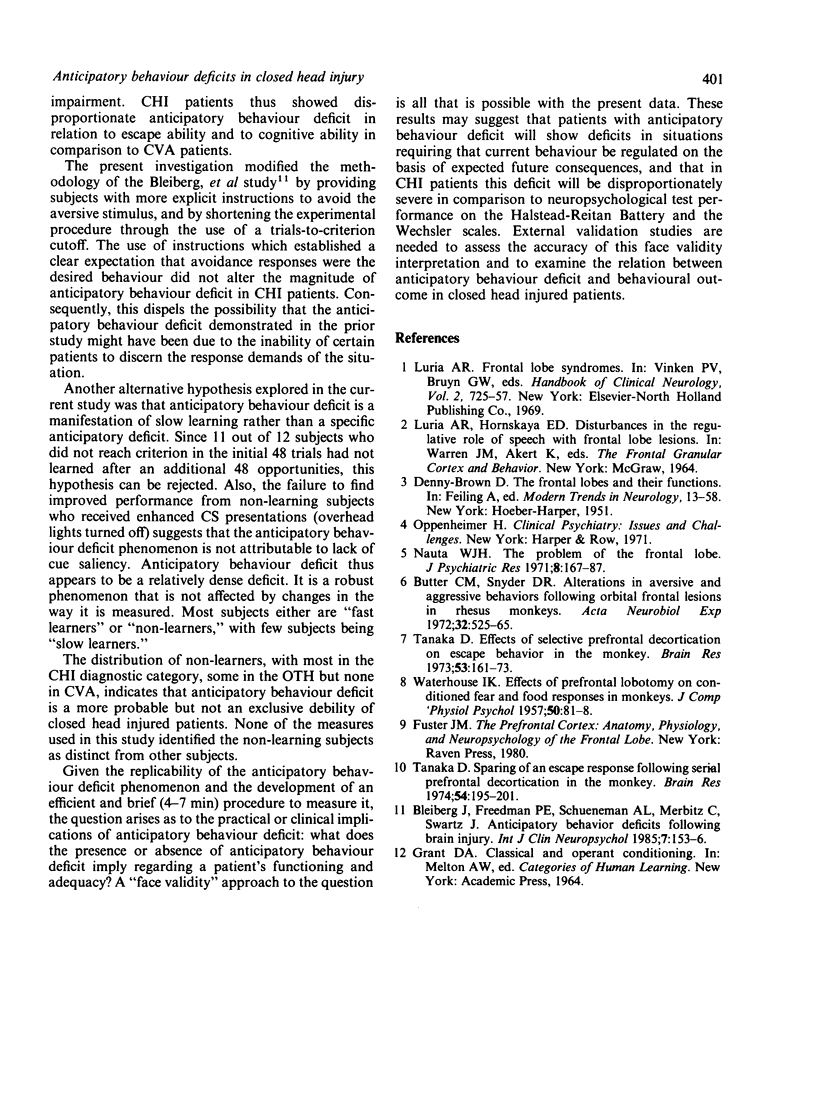Abstract
Closed head injured patients demonstrated greater anticipatory behaviour deficit than cerebral vascular accident patients on a shuttlebox-analog avoidance task, even though these two groups did not differ on escape behaviour and on performance on the individual tests of the Halstead-Reitan Battery and Wechsler scales. Neither clarification of instructions, additional trials, nor enhancement of the warning cue appeared to improve the anticipatory behaviour deficit. It was concluded that anticipatory behaviour deficit should be considered a relatively dense deficit that is not identified by standard instruments. Clinical and practical implications are discussed.
Full text
PDF



Selected References
These references are in PubMed. This may not be the complete list of references from this article.
- Tanaka D., Jr Effects of selective prefrontal decortication on escape behavior in the monkey. Brain Res. 1973 Apr 13;53(1):161–173. doi: 10.1016/0006-8993(73)90775-0. [DOI] [PubMed] [Google Scholar]
- Tanaka D., Jr Sparing of an escape response following serial prefrontal decortication in the monkey. Brain Res. 1974 Jan 11;65(2):195–201. doi: 10.1016/0006-8993(74)90032-8. [DOI] [PubMed] [Google Scholar]
- WATERHOUSE I. K. Effects of prefrontal lobotomy on conditioned fear and food responses in monkeys. J Comp Physiol Psychol. 1957 Feb;50(1):81–88. doi: 10.1037/h0047546. [DOI] [PubMed] [Google Scholar]


